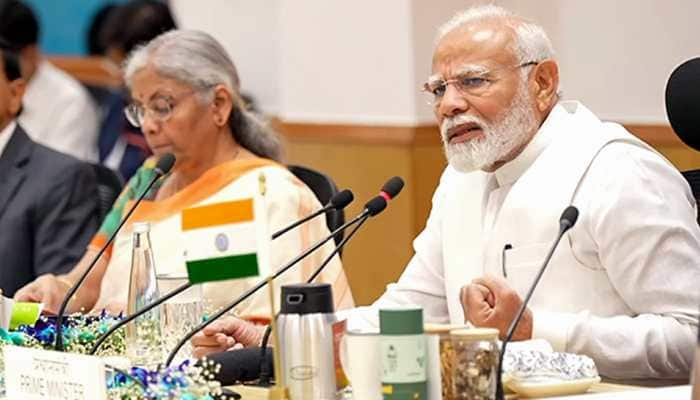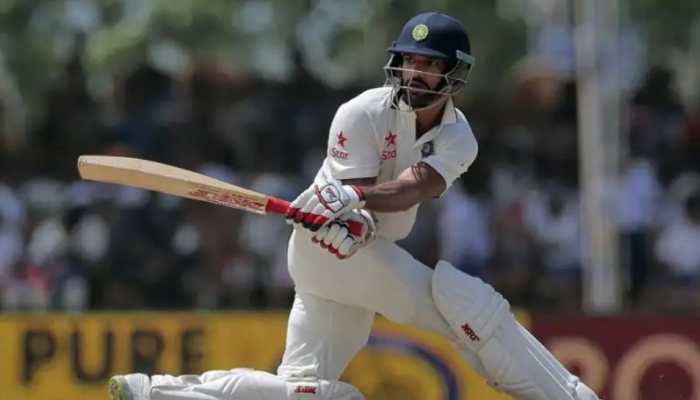Ganesh Pyne- The king of dark imagery
Painter Ganesh Pyne was one of the greatest exponents of the Bengal School of art, whose dark and brooding imagery got him international fame, premium prices and substantial influence among contemporaries and juniors in India through the decades.
Trending Photos
)
Kolkata: Painter Ganesh Pyne was one of the greatest exponents of the Bengal School of art, whose dark and brooding imagery got him international fame, premium prices and substantial influence among contemporaries and juniors in India through the decades.
Often called the "painter of darkness", the surreal elements and depth in Pyne`s work have been a big draw among art lovers, and people standing still for longer durations before his creations than of the others was a common sight at exhibitions spread across Asia, Europe and North America.
The 1937-born Pyne once said the scene of a stark naked corpse of an old woman with blood oozing from her breasts and a shining necklace around the neck during the 1946 communal riots in (then called) Calcutta had shaken him so much that he remained "obsessed with the dark world " throughout his life.
Fond of drawing and doodling since his childhood, Pyne grew up in a decaying mansion in a north Calcutta lane listening to folk tales from his grandmother, which opened "my third eye and turned out to be my biggest inspiration".
He graduated from the Government College of Art and Craft in Calcutta in 1959, deeply influenced by Abanindranath Tagore, one of the father figures of modern Indian art, as also Hals Rembrandt and Paul Klee.
For some time, Pyne sketched animation films in a studio, with Walt Disney casting a spell on him.
Four years later, he joined the Society of Contemporary Artists, and his first painting was "Winter`s Morning" which showed him and his brother going to school.
Not having enough money to buy colour, he concentrated on small drawings in pen and ink. After some time, he experimented with water colours in the Bengal School mode, with the anger and despair of the 1970s fuelling one of the fruitful periods of his life as an artist.
Pyne later moved on to the gouache and tempera form of painting, with the latter earning him maximum plaudits.
Boats, dark doors and windows, misty mornings, wayside temples, birdman, Chaitanya (leader of the Bhakti movements) and animals were Pyne`s favourite subjects, and his creations rich in imagery and symbolism.
He revelled in bold, precise, lines, displaying a masterly control over the drawings -- powerful both in form and content -- using with a telling effect his favourite ochre and shades of black and blue colours to suggest dark events.
He participated in various group exhibitions including the Paris Biennale in 1969, contemporary Indian Painting in West Germany (1970), as also various other shows in Europe, Asia and North America.
Pyne was not as prolific as others in the field, but his works have deeply influenced contemporary and younger painters, and he has been variously described as "artists of artists" and "philosopher of philosophers".
"He gave a new dimension to modernity," said artist Suvaprasanna.
"The twaine of tradition and modernity met in his works," said painter Jogen Chowdhury.
Pyne`s creations always sold at premium prices.
Years back, artist Anjali Ela Menon was asked how it felt to be the highest paid artist in India. She replied: "This ranking by the price you fetch is odious. In terms of square inch price, Ganesh Pyne would rank first."
Pyne was also widely feted. He received the Shiromani Puraskar in 1985, the Birla Academy of Art and Culture award in 1973, besides being conferred Raja Ravi Varma award by the Kerala government. Last year, he was presented the ICC Lifetime Achievement Award.
IANS
Stay informed on all the latest news, real-time breaking news updates, and follow all the important headlines in india news and world News on Zee News.
Advertisement
Live Tv
Advertisement







)
)
)
)
)
)
)
)
)
)
